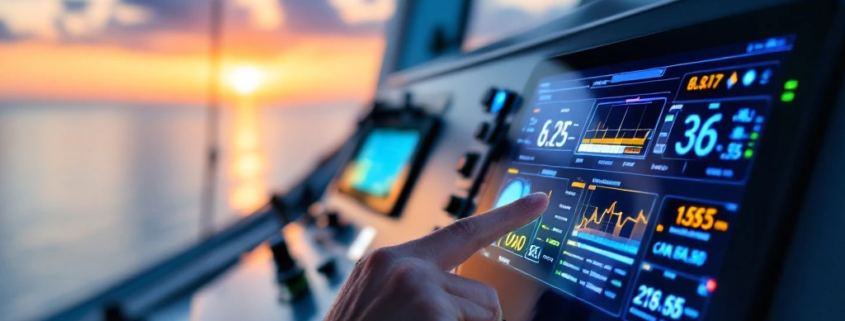How Do Marine Systems Ensure Reliability Amidst Harsh Conditions?
Maritime equipment and systems face extraordinary challenges that demand specialized design and maintenance approaches. Seagoing vessels and offshore installations rely on robust technologies engineered specifically for oceanic environments. The combination of saltwater exposure, constant motion, temperature fluctuations, and violent weather conditions creates a perfect storm of reliability threats. Advanced engineering, rigorous maintenance protocols, and cutting-edge monitoring solutions work together to ensure critical maritime systems function reliably despite these harsh operating conditions.
What Makes Marine Systems Vulnerable to Harsh Conditions?
Maritime environments present some of the most challenging conditions for technological systems. The omnipresent threat of saltwater corrosion stands as perhaps the most significant concern, with its ability to rapidly deteriorate metal components and electrical connections. This corrosive environment operates relentlessly, 24 hours a day, accelerating wear and potentially causing catastrophic failures if not properly addressed.
Beyond corrosion, marine systems must withstand extreme weather phenomena, from hurricanes and high winds to freezing conditions. Temperature variations create additional stress through thermal expansion and contraction cycles that can compromise structural integrity over time. Furthermore, the constant motion – pitching, rolling, and vibration – introduces mechanical stresses that conventional land-based equipment isn’t designed to handle.
The consequences of system failures at sea are considerably more severe than on land. When a vessel is hundreds of kilometers from shore, even minor systems failures can escalate into dangerous situations. Navigation systems, propulsion, communications, and environmental controls must maintain operational continuity regardless of conditions. This reliability directly impacts human safety, environmental protection, and operational economics.
How are Marine Systems Engineered to Withstand Extreme Environments?
Creating resilient maritime technology begins with specialized material selection. Engineers employ corrosion-resistant alloys like marine-grade stainless steel, bronze, and titanium that can withstand prolonged saltwater exposure. For electronic components, conformal coatings provide an additional protective barrier against moisture and salt spray, while specialized marine-grade cables feature enhanced insulation properties.
Redundancy represents another cornerstone of maritime engineering philosophy. Critical systems often incorporate backup components or entirely parallel systems designed to activate automatically if primary systems fail. This redundancy extends to power supplies, control systems, and communication networks, ensuring operational continuity even when individual components experience problems.
Physical protection plays an equally important role through IP-rated enclosures (Ingress Protection). Maritime equipment typically requires a minimum rating of IP56, indicating protection against powerful water jets from any direction. Mission-critical systems often utilize IP68 or higher, ensuring continued operation even during temporary immersion.
Structural reinforcement techniques address the unique mechanical stresses of marine environments. Shock-mounting systems absorb vibration and impact forces, while flexible connections accommodate the constant movement inherent to vessels at sea. These engineering approaches collectively create systems that can maintain reliability despite the challenging conditions they face daily.
What Maintenance Practices Ensure Long-term Marine System Reliability?
Preventive maintenance schedules form the foundation of maritime reliability strategies. Unlike land-based operations, marine maintenance must follow strict calendars that account for vessel operations, scheduled port calls, and regulatory requirements. These schedules typically involve more frequent inspection intervals than land-based counterparts, recognizing the accelerated wear in marine environments.
Condition monitoring technologies have transformed maritime maintenance approaches. Vibration analysis can detect early signs of mechanical wear in propulsion systems before catastrophic failures occur. Similarly, thermographic imaging identifies potential electrical issues by detecting abnormal heat patterns. Oil analysis provides insights into internal engine conditions without disruptive teardowns.
Corrosion prevention protocols require diligent attention in maritime settings. Beyond initial protective coatings, ongoing maintenance includes regular inspection of sacrificial anodes, touch-up of damaged protective coatings, and application of corrosion inhibitors. Fresh water washing of external components helps remove accumulated salt deposits that accelerate corrosion processes.
The maritime industry employs specialized inspection techniques adapted for its unique challenges. Ultrasonic thickness testing monitors hull integrity by measuring metal thickness without requiring drydocking. Remote camera inspections allow technicians to examine hard-to-reach areas like tanks and voids. These maintenance practices collectively extend equipment life despite the relentless environmental challenges.
Which Technologies are Revolutionizing Marine System Reliability?
Remote monitoring systems represent one of the most significant advances in maritime reliability. Modern vessels increasingly employ comprehensive sensor networks that continuously transmit operational data to shore-based monitoring centers. This connectivity enables real-time system health monitoring and allows for early intervention when parameters drift beyond optimal ranges.
Artificial intelligence and predictive maintenance algorithms analyze the vast data streams generated by these sensor networks. These systems can identify subtle patterns that human operators might miss, detecting potential failures days or weeks before they manifest. This predictive capability allows maintenance to shift from reactive to proactive, scheduling interventions during planned port calls rather than responding to emergencies at sea.
Advanced materials science continues to deliver innovations specifically for maritime applications. Self-healing coatings can automatically repair minor damage, maintaining protective barriers without human intervention. Nanomaterial additives enhance the corrosion resistance of traditional metals while maintaining their structural properties. These material advances increase longevity in harsh conditions.
Sophisticated diagnostic tools enable more precise troubleshooting and maintenance. Digital twins – virtual replicas of physical systems – allow engineers to simulate conditions and test solutions before implementation. Augmented reality systems provide maintenance technicians with visual guidance overlaid on the actual equipment, improving accuracy and efficiency during repairs.
Key Takeaways for Maximizing Marine System Reliability
An integrated design approach that considers environmental challenges from the earliest planning stages delivers the most reliable maritime systems. This holistic perspective ensures compatibility between components and creates systems optimized for their specific operating environment rather than adapted from land-based designs.
Proactive maintenance strategies yield significantly better outcomes than reactive approaches. The investment in monitoring technologies, regular inspections, and preventive maintenance pays dividends through reduced emergency repairs, extended equipment life, and improved operational reliability.
Technology adoption continues to transform maritime reliability practices. From advanced monitoring to AI-powered analytics, embracing these innovations helps vessels and offshore installations stay operational despite challenging conditions. The digital transformation of maritime operations provides unprecedented visibility into system health and performance.
Specialized expertise remains irreplaceable in the maritime sector. While technology provides valuable tools, experienced professionals who understand the unique challenges of marine environments make crucial decisions about design, maintenance, and operations. We at TKE Sweden AB understand these maritime challenges and offer customized solutions that leverage CAN-bus technology to enhance system reliability and performance monitoring in harsh marine environments.
For maritime operators seeking to enhance system reliability, the path forward combines thoughtful engineering, diligent maintenance, appropriate technology adoption, and partnerships with experienced technology providers. This multifaceted approach ensures maritime operations remain safe, efficient, and environmentally responsible despite the challenging conditions they face daily.
Interested in marine automation and control systems?
Browse our marine case studies to see how we support safe, efficient operations in harsh marine environments through smart CAN networking.



